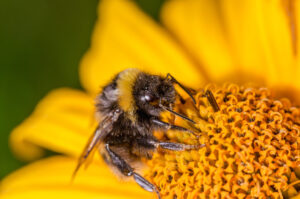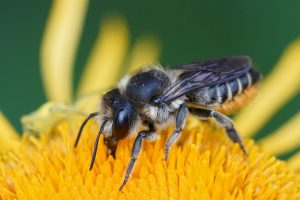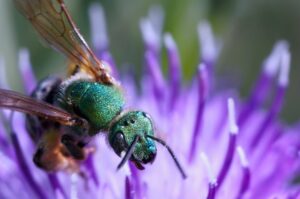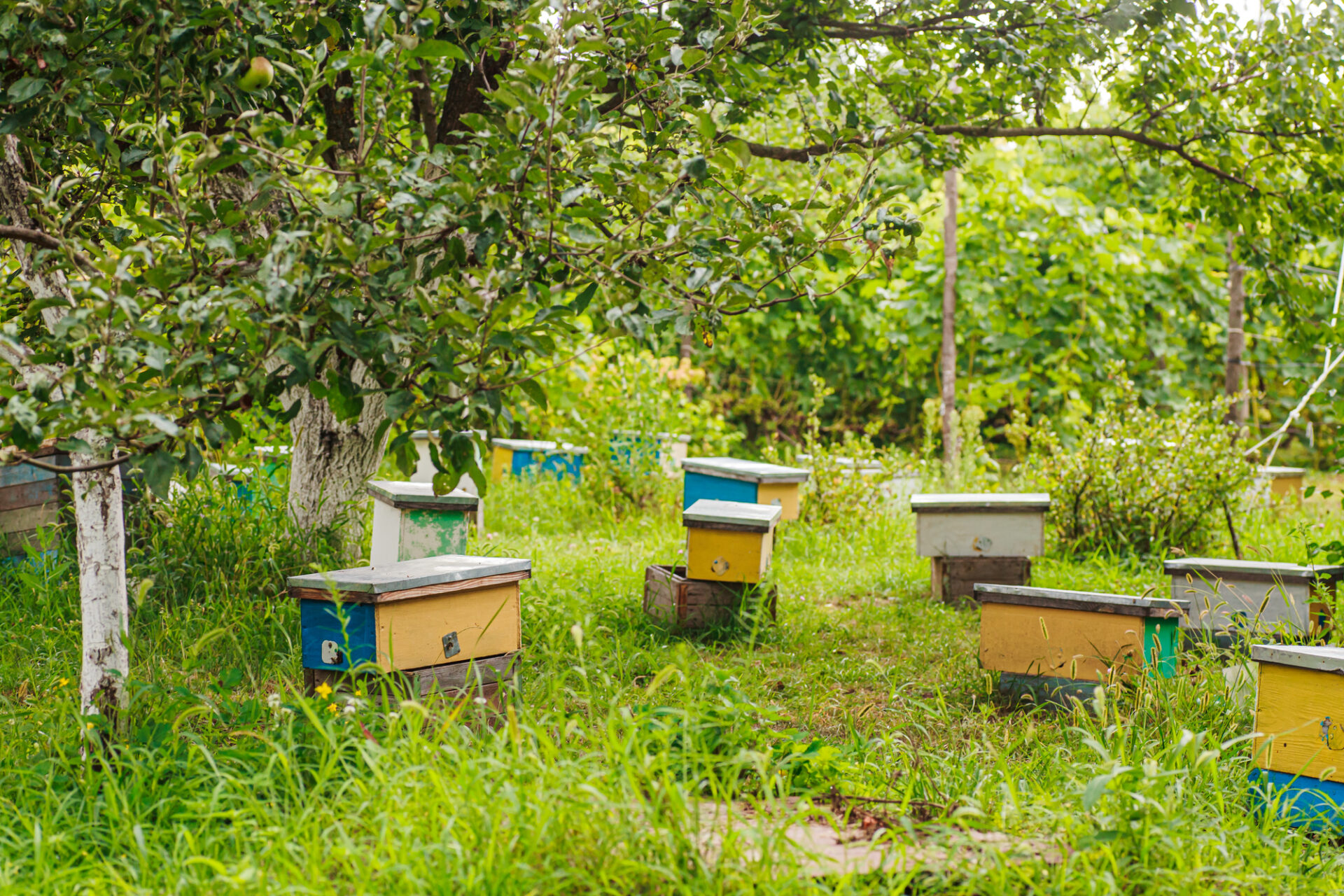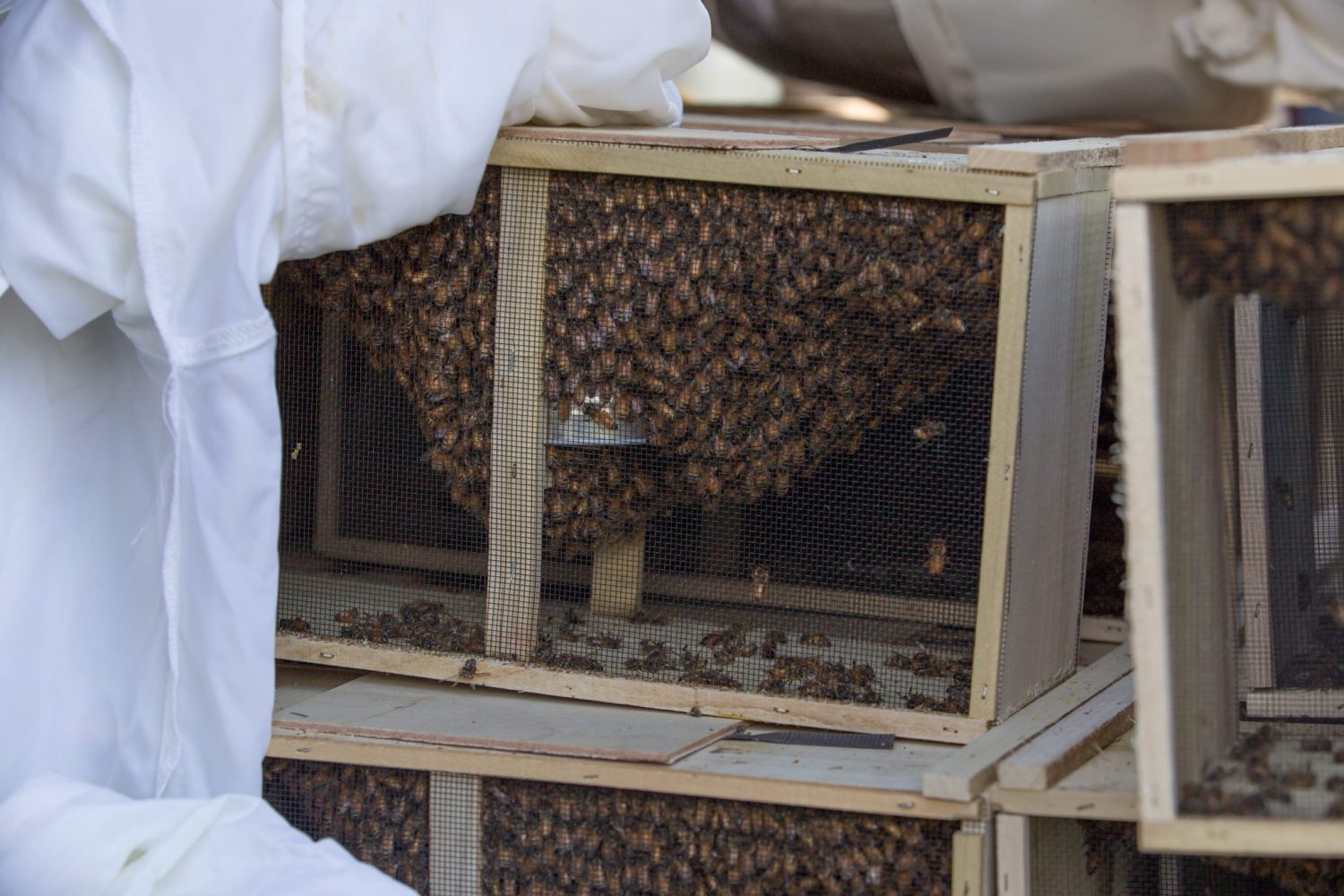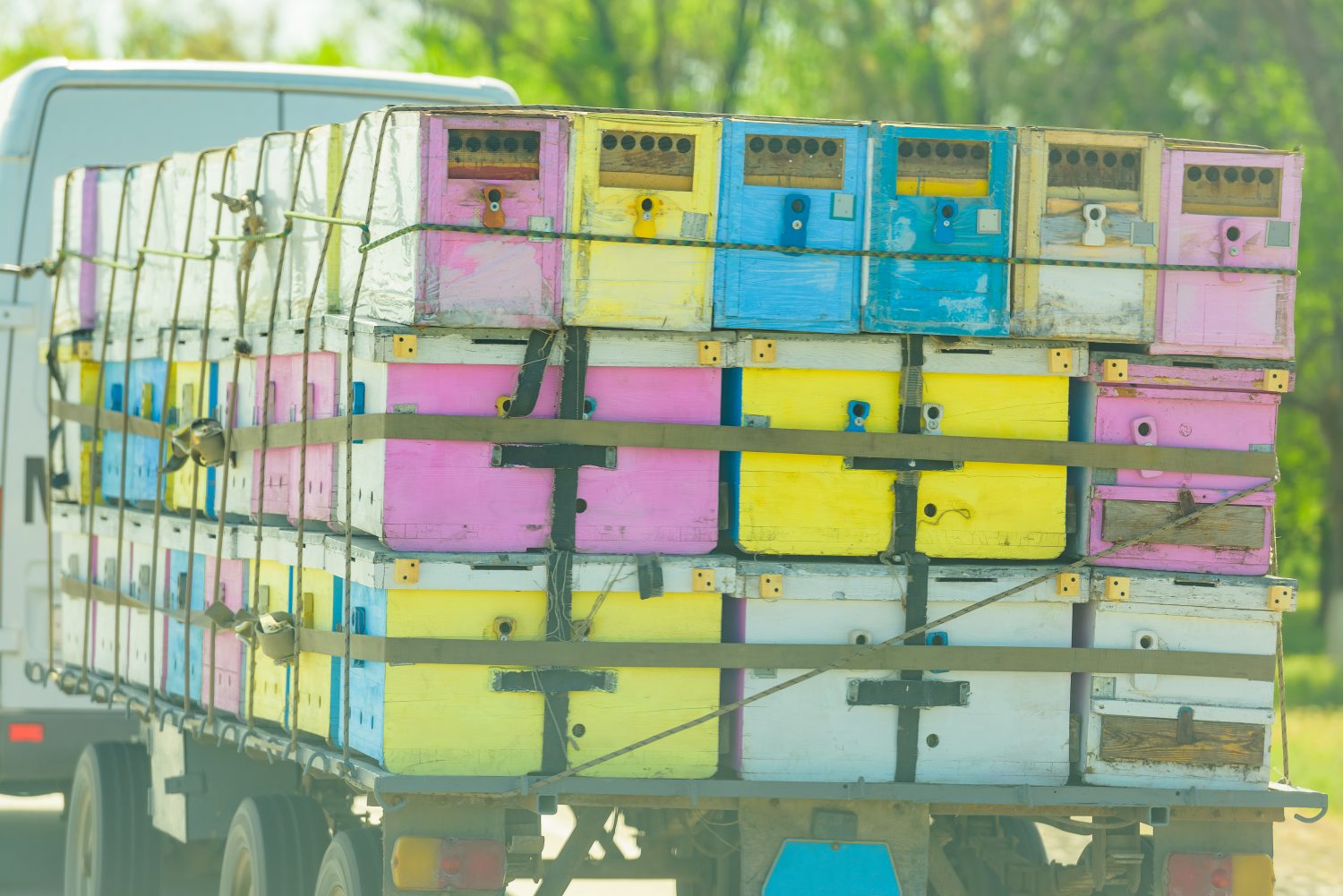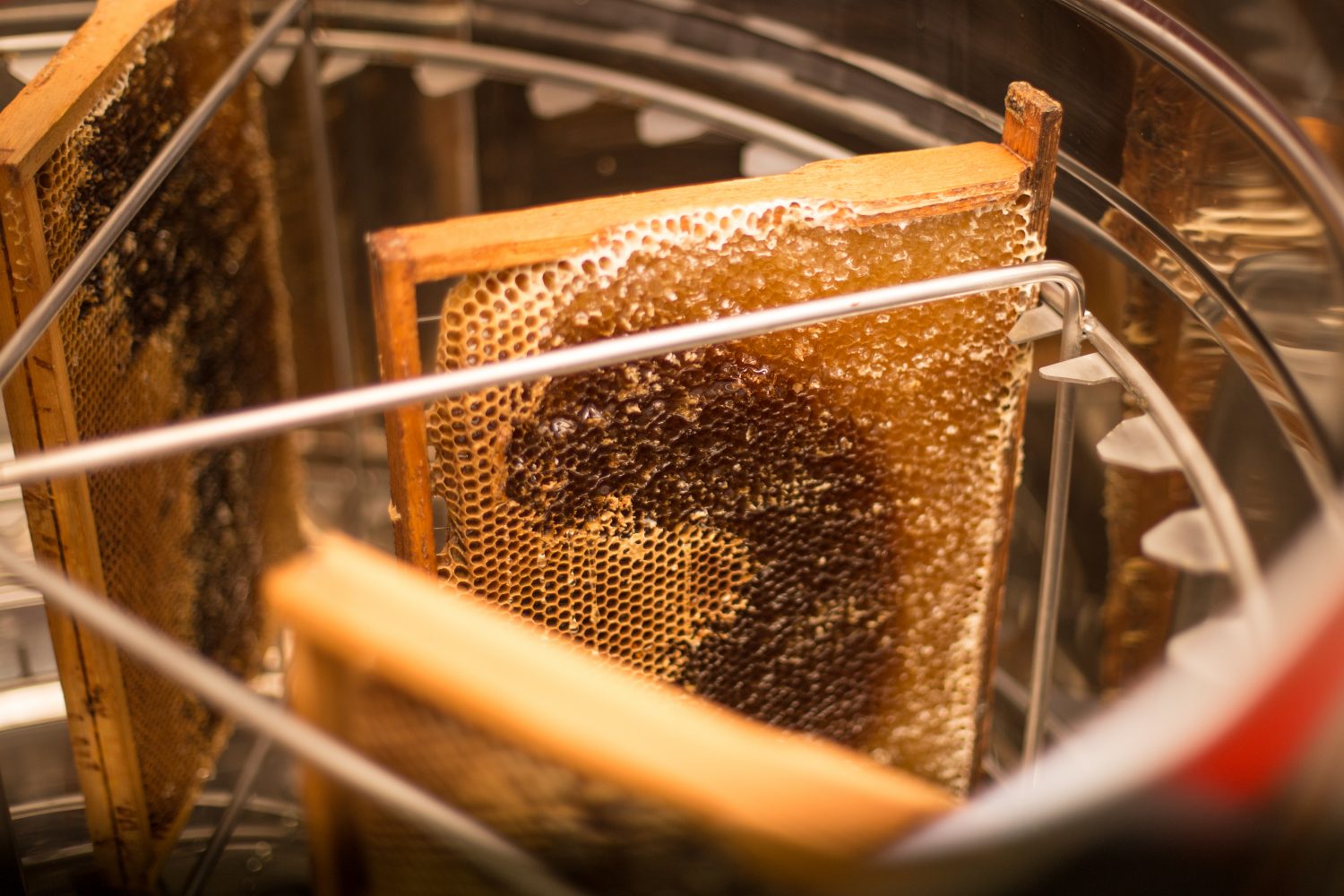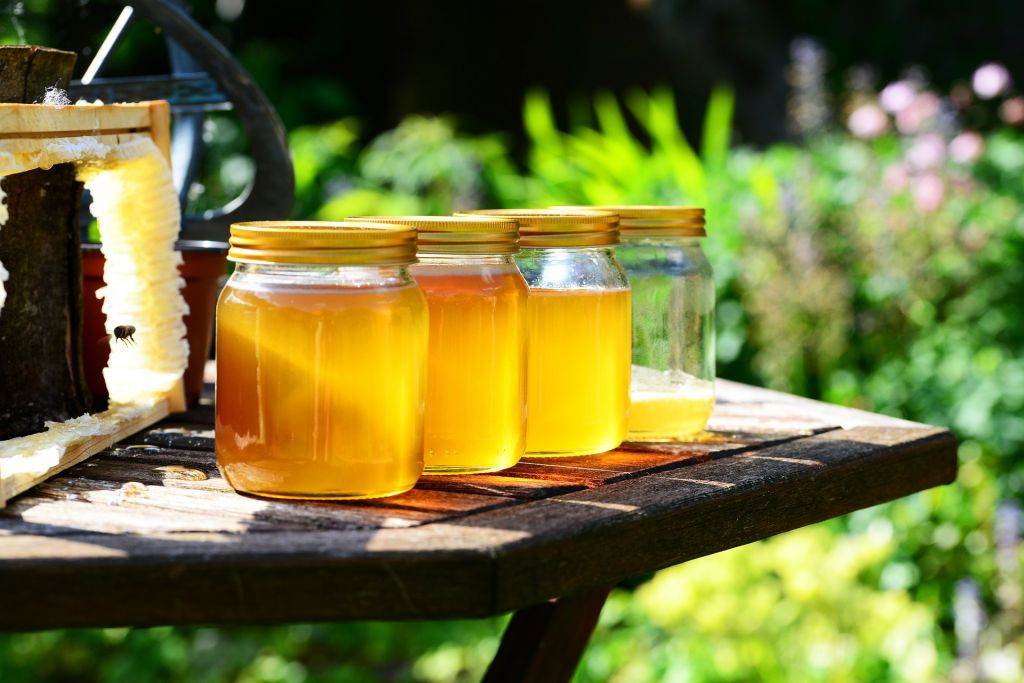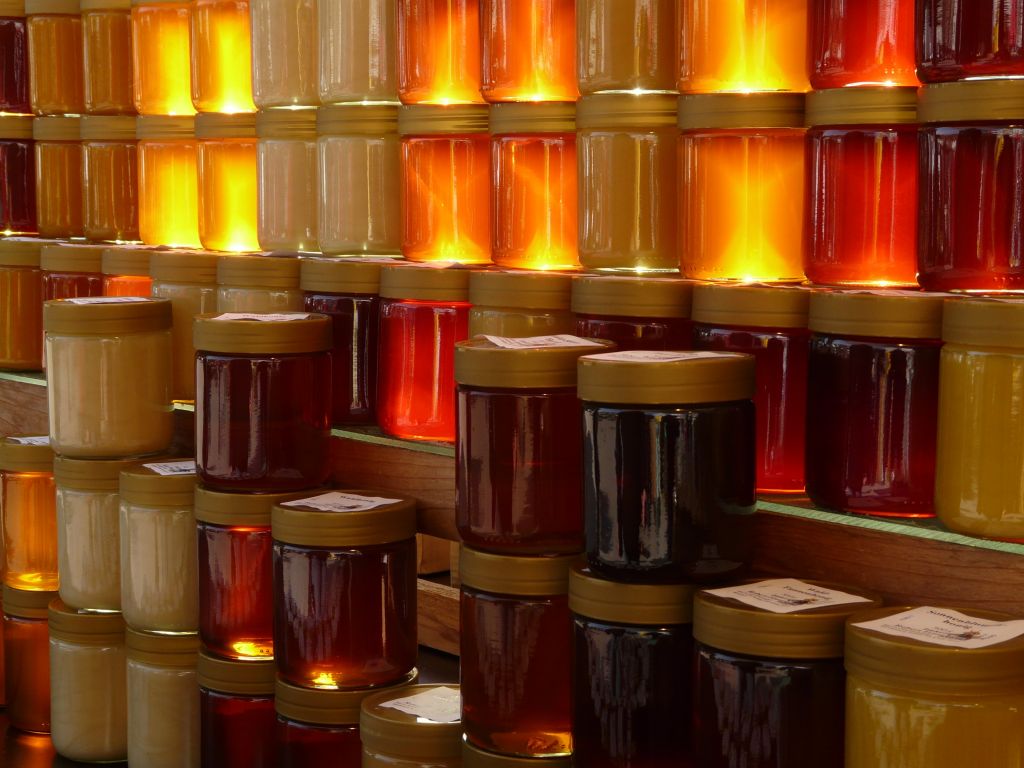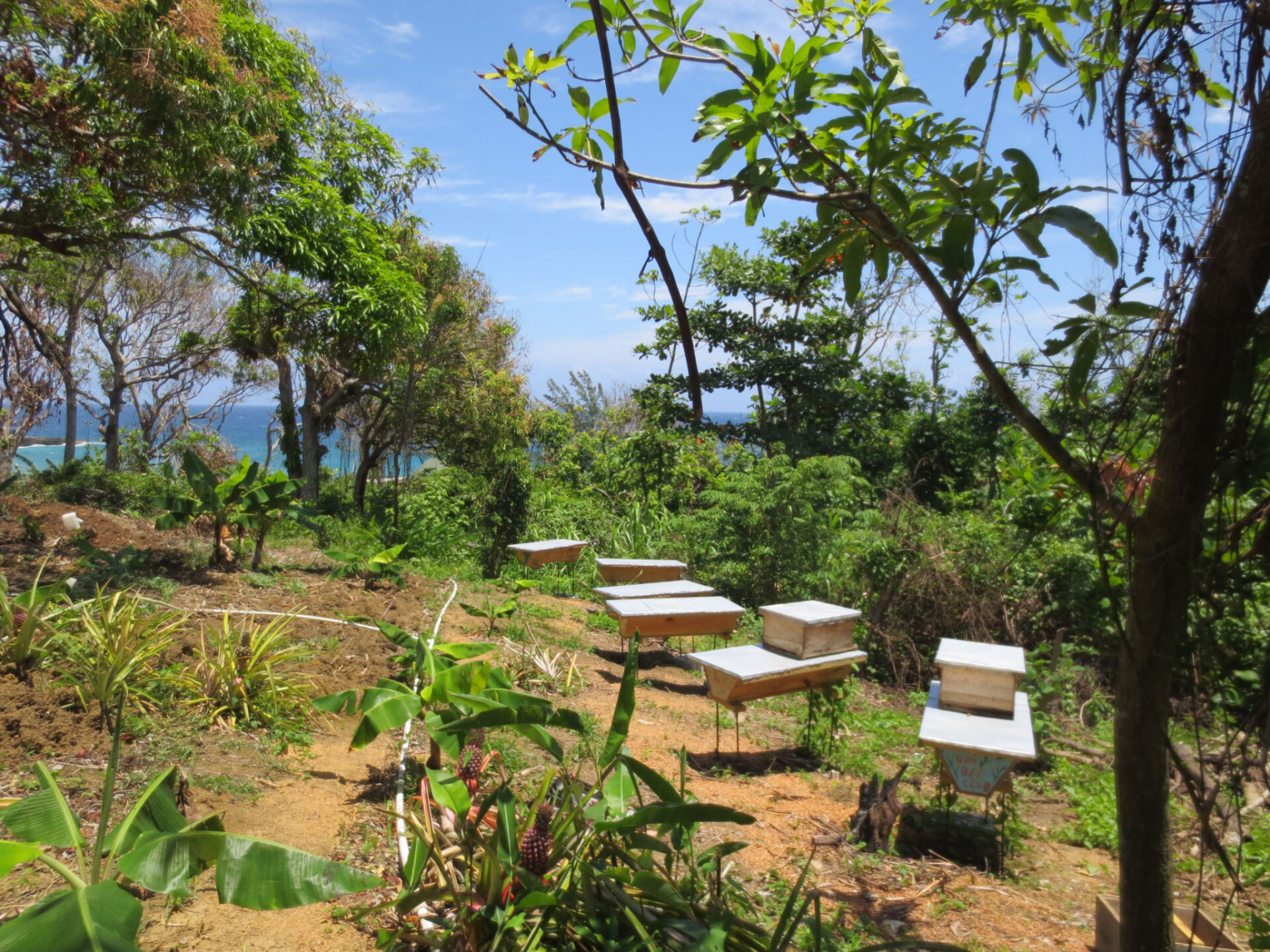If you purchase an independently reviewed item through our site, we earn an affiliate commission. Read our affiliate disclosure.
Beekeeping in Jamaica has been on an upward trajectory over the last couple of years, described as the fastest-growing sub-sector in Jamaica’s agricultural industry. Jamaica is a hub for a wide variety of flowers, backed by favorable year-round weather that provides the right conditions for raising bees. Commercial beekeepers have enjoyed immeasurable success in Jamaica, and Jamaican honey comes with a unique flavor, thanks to the wide variety of plant species that honeybees forage.
Jamaica’s beekeeping history dates back to the 1770s, with records showing early indigenous people in Jamaica keeping bees and harvesting honey from logs. Other records from 1866 show products exported from Jamaica to the United Kingdom containing beeswax and honey in every cargo. Exhibitions carried out in Paris in 1883 and 1878 show Jamaican honey and beeswax winning coveted awards. Honeybees contribute up to 20 times the value of what is enjoyed by farmers in Jamaica. If you want to be a part of the thriving beekeeping community in Jamaica, this guide shall hopefully help.
Types of Bees in Jamaica
Jamaica hosts 69 recorded types of bees, comprising honey-making and pollinator bees. The most common bee species in Jamaica were brought to the Jamaican soil by Spanish people. Jamaican wild and planted fruit trees provide a unique blossom that honeybees forage, making Jamaican honey rich in flavor. Some of the most popular types of bees in Jamaica include:
The Western Honeybee (Apis Mellifera)
Perhaps the most common type of bee used for beekeeping, these bees are easily distinguishable from other types due to their black abdomens with golden brown to black stripes. Honeybees pollinate crops, fruit, and wild trees. The worker bees use pollen baskets on their legs to collect and carry pollen to the nest. They live as a colony, comprising a queen bee, worker bees, male drone bees, and the brood or young ones. Honeybees are raised in artificial beehives but can be found in wild colonies. They can fly for up to 3 miles as they search for pollen and nectar. Worker bees have a stinger and will sting only once in their lifetime. Honeybees are excellent pollinators that visit a wide variety of plants and wild trees. They rarely sting and will do so only when they feel attacked.
Bumblebees
Belonging to the genus Bombus, bumblebees are easy to spot due to their large size when compared to honeybees. Their black bodies are covered with dense yellow and black hair. Although similar to carpenter bees, they are smaller in size. The head of a bumblebee is also smaller compared to the carpenter bee. Bumblebees have hairy abdomens and make a signature noise while foraging on flowers. They use pollen baskets on their legs to ferry pollen into their ground nests, where they live in colonies. Bumblebees are excellent pollinators and will sting if they feel ambushed.
Carpenter Bees
Belonging to the genus Xylocopa, Carpenter Bees are known for their destructive nature and are also referred to as wood bees due to their wood-drilling habits. These exceptional woodworkers create holes in wood that might be mistaken for work done with a power drill. Signs of carpenter bee presence include the presence of sawdust.
The female carpenter bee drills a hole and lays a female egg, followed by a male egg. Eggs hatch during spring, and the bees leave the nest in a single file, with males exiting first, followed by females. Males leave the nest early to prepare for mating. Carpenter bees are excellent pollinators, equipped with pollen baskets on their feet. They have a black body with thick yellow and black hairs on the head and thorax, while the abdomen tends to be bald. They possess stingers, with the female carpenter bee stinging only when feeling threatened. The male carpenter bee is more aggressive and territorial but does not sting; it hovers to keep intruders away.
Mason Bees
Belonging to the genus Osmia, Mason Bees are tiny and fast-flying bees with a distinctive metallic body color ranging from black, and blue, to dull green, akin to fighter jets in agility. Mason bees lack pollen baskets and have dense hair on their underbodies used for carrying pollen. They use mud to prepare nests, earning them the name “mason bees.” Mason bees seek holes on stems and twigs for nesting, and they can be attracted using pre-drilled holes or bee hotels.
Female mason bees lay the female egg at the back of their nest, followed by the male egg. They collect nectar, create food reserves for their offspring using their enzymes, and then seal the nest opening. Males hatch first and await females for mating. Mason bees are generalist pollinators, visiting a wide variety of flowers, especially those near the nest. They have stingers but rarely sting, with only females stinging when mishandled.
Leafcutter Bees
Belonging to the genus Megachile, Leafcutter Bees are easily identifiable by their large jaws and white hairs. They share nesting preferences with mason bees but use leaves instead of mud. These black bees have white hairs on their thorax and abdomen’s bottom, with large heads and massive jaws adapted for cutting leaf pieces. Leafcutter bees fly rapidly, using their abdomens to carry pollen.
Leafcutter bees are crucial pollinators in wild habitats, pollinating fruit trees, vegetables, and crops like onions, alfalfa, carrots, and blueberries for commercial growers. Existing as solitary bees, they can sting only when mishandled.
Orchid Bees
Commonly found in Jamaica, Orchid Bees, also known as Euglossines, are easily identifiable by their long, thin tongues and shiny metallic body color. Compared to other bees, orchid bees have fewer hairs on their abdomen. They exhibit unique behavior, specializing in pollination, making them highly efficient pollinators. Male orchid bees have hairs on their front legs for collecting essential oils, stored on their inflated hind legs. Jamaican orchid bees do not socialize and do not live in hives.
How to Start a Bee Farm in Jamaica
If you are considering starting a bee farm in Jamaica, understand from the start that beekeeping is not for the faint-hearted. You need to comprehend all the requirements before you take the plunge. Raising your own bees will turn out to be one of your best decisions, given the many benefits associated with keeping bees.
To get started in the business, you will need to plan, set up, organize, and then market your business. All these are important steps:
Beekeeping Business Planning
Just like with any other type of business, you will need to plan for your beekeeping business in Jamaica earlier on. This is the first step that ensures aspects of the beekeeping business are evaluated before the launch. Planning will guide the direction the business will take from the onset. A solid plan for your business will project your view into the future and help you be prepared for any unexpected events.
Planning for the business will involve a review of all aspects, including:
1. Market Research
Market research involves researching all aspects of the beekeeping business, including industry trends and strategies for success. Choose an area of specialization from the onset, considering the various products that can be derived from honeybees, such as honey, pollen, wax, bee air/apitherapy, royal jelly, and pollination services. Thorough research about your potential market will help identify products or services with higher potential demand, in which you might decide to specialize.
Evaluate the demand for your beekeeping products in different markets, considering variations in location and customer preferences. Assess the market size, existing competition, and industry regulations. Joining beekeeping associations can provide valuable insights, so identify those worth being a part of.
Business Setup
Once the market research is complete, proceed to set up your beekeeping business. This involves acquiring the necessary equipment, selecting the bee species you want to raise, and preparing the physical infrastructure, such as beehives and apiaries. Ensure compliance with local regulations and safety standards.
Organizing Resources
Organize the resources needed for your beekeeping venture, including financial resources, manpower, and supplies. Develop a budget that covers startup costs, ongoing expenses, and contingencies. Establish relationships with suppliers for equipment and beekeeping supplies.
Marketing Strategy
Create a comprehensive marketing strategy to promote your beekeeping products and services. Utilize various channels such as social media, local markets, and partnerships with retailers. Highlight the unique qualities of your honey and other bee-related products. Consider offering educational programs or workshops to raise awareness about the importance of bees and beekeeping.
By following these steps, you can embark on a successful beekeeping journey in Jamaica. Remember that continuous learning, adaptability, and dedication are key factors for long-term success in the beekeeping industry.
2. Studying Beekeeping
There is no substitute for knowledge and skill, and unquestionably, beekeeping demands skill. Therefore, you must dedicate your time and resources to studying the beekeeping business. Honeybee colonies require unwavering care, and beekeepers need to harvest honey at the right time, converting raw honey and other bee products into marketable goods. Moreover, beekeepers must adopt and implement beekeeping best practices to safeguard the bees and themselves.
For beginners, enrolling in a relevant beekeeping course in Jamaica is advisable. Alternatively, self-study, either online or offline, can be beneficial. Nowadays, finding numerous useful resources about beekeeping is easy.
Beginner beekeepers are encouraged to join reputable beekeeping associations in Jamaica, where they can meet and interact with like-minded individuals. Beekeeping associations provide valuable information and resources beneficial to their members.
3. Setting up the Business
Before introducing the honeybees, it is imperative to identify a suitable location for the apiary. Potential spaces to consider include a garden, a community garden, a backyard, a farm, or any other viable space. The ideal space for keeping bees should have enough room for the honeybees to move around, be accessible for regular inspection or honey harvesting, and have sufficient space for honeybee product storage.
4. Sourcing Bees and Beekeeping Equipment
Consulting with an Apiculture Extension Specialist, available at the Research and Development Division under the Ministry of Agriculture and Fisheries, is recommended when procuring bees and beekeeping equipment. This ensures that the bees come from healthy sources and that the equipment is suitable for use.
Careful selection of bee stock is crucial when establishing a new apiary to ensure the best genetics from the beginning. Different strains of bees possess different genetic characteristics, and high-quality queens will produce the best offspring.
Honeybees are typically delivered as a colony, including worker bees, male drones, and the queen. A colony of bees can cost between $120 to $200, depending on your location. You can purchase honeybees from local beekeeping associations or a local beekeeper.
In addition to bees, you will need standard beehives for raising honeybees, costing between USD $120 to $200 each, depending on your locality. Consider starting with at least two hives.
Other essential requirements for starting beekeeping in Jamaica include:
- Protective gear like a beekeeping suit, a veil, and gloves.
- Hive tool.
- Bee brush.
- Flowers for pollen and nectar.
- Bee smoker.
5. Choosing Your Products and Services
As a beekeeper, selecting the products or services to specialize in is a crucial decision. Some options for specialization in beekeeping include:
- Honey
- Beeswax
- Training programs and the sale of beekeeping books
- Candles
- Courses and on-demand lessons
- Pollination services
- Breeding and selling honeybees
- Sale of beekeeping supplies and equipment
The chosen beekeeping product or service will impact the target market and how the business is conducted. Consider the target buyers and decide whether to sell honeybee products or services directly to clients or through resellers.
6. Determining Your Business Plan and Budget
A well-structured business plan and budget are essential for keeping the business on track. The business plan outlines key elements such as:
- Business name
- Mission and vision
- Business goals and objectives
- Business values
Additionally, a budget should be drafted to cover startup costs, variable and fixed business expenses, and potential earnings from the beekeeping business. The budget will guide whether external funding is necessary.
7. Registering with the Ministry of Agriculture
Once the business plan and budget are in place, the next step is to register the business with the regulatory authority, the Ministry of Agriculture. All apiaries must be registered with the Ministry of Agriculture and Fisheries by January 31st each year. The registration form can be downloaded through this link.
After completing the form, submit it to the nearest office of the Ministry of Agriculture and Fisheries for review and approval. Alternatively, the form can be mailed to the provided details on the website.
8. Moving the Bees
The Chief Plant Protection Officer in Jamaica sets the legal framework and guidelines for the importation, transportation, and management of honeybees. Beekeepers and managers must comply with these rules and regulations.
To transport honeybees, written permission from the Chief Plant Protection Officer is required. Beekeepers should also be able to identify diseases and pests in beehives or apiaries and report any unusual symptoms to the Apiculture Unit within the Ministry of Agriculture.
Best practices in pest and disease management, including an integrated pest management system, are encouraged. Beekeepers should maintain good hygiene to avoid unpleasant odors that may irritate honeybees. A food handler’s permit is required before harvesting and extracting honey, and protective clothing should be kept clean.
 BeeKeepClub Resources and Guides for Beekeepers
BeeKeepClub Resources and Guides for Beekeepers

